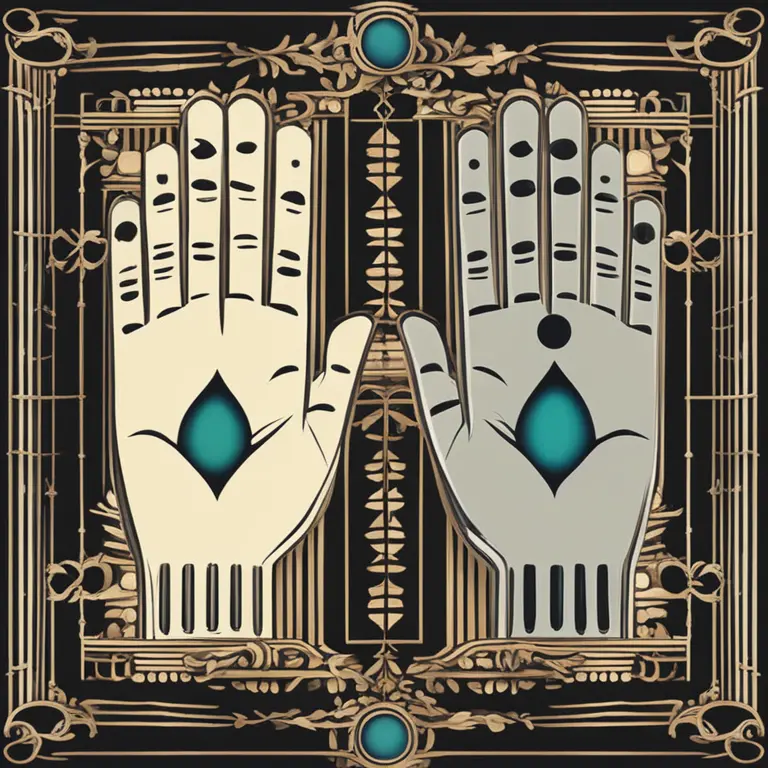
The Credibility of Palmistry: Myth or Reality?
Examine the credibility of palm reading as we delve into its principles, scientific views, and the ongoing debate on its effectiveness.
article by Nora Pennington
A Glimpse into Palmistry
Palmistry, or chiromancy, has been practiced for millennia, purportedly granting insights into one's personality, future, and life's potential. This ancient art analyzes the lines and features of the hands, suggesting a mystical connection between our palms and individual fate. While many attest to its applicability, skeptics question its legitimacy, considering it a pseudoscience. Despite varied opinions, the practice continues to intrigue an audience in search of understanding life's mysteries. As we progress into 2024, does the art of palm reading hold any weight in our technologically advanced era? This article endeavors to uncover the truth behind palmistry's claims.

Scientific Perspective
The scientific community largely discounts palmistry as lacking empirical foundation. Critics argue that its principles are not based on credible research or data. Psychologists suggest that the Forer effect may explain why some individuals believe in palm readings—this phenomenon occurs when individuals find personal meaning in vague, general statements. However, despite the lack of scientific substantiation, enthusiasts often report personal anecdotes that speak to the accuracy of palmistry, fueling the debate on its efficacy.

Components of Palmistry
Understanding palmistry involves studying its core elements: heart line, head line, life line, and fate line, amongst others. Each is said to signify different aspects of an individual's experience, from emotional well-being and intellectual faculties to life span and significant life changes. The practice also takes into account hand shapes, finger lengths, and mounts. Proponents argue that these physical attributes could reflect character traits and tendencies, positioning palmistry as a tool for self-awareness and growth.

Cultural Impact
Culturally, palmistry has secured a place in numerous traditions worldwide. It's practiced in various forms across different cultures, each interpreting the hands' signs in their unique way. The digital era has seen the resurgence of interest in such mystical arts, with palmistry apps and online services gaining popularity. This indicates that despite modernity's rationality, the allure of ancient wisdom practices like palmistry persists, drawing people to explore the unknown and seek solace in the possibility of a predestined path.

Palmistry Today
Today's palmists often combine traditional knowledge with psychology and holistic healing, offering a more contemporary form of the practice. While it might not be recognized as scientifically valid, palmistry has adapted to align with modern needs for spirituality and personal exploration. In the context of wellness trends, palmistry is seen as a method of introspection and emotional healing, offering clients a reflective experience, whether or not the readings are taken at face value.
The Ongoing Debate
Does palmistry work? The answer may not be straightforward. For believers, anecdotes of accurate readings provide enough validity. For skeptics, the lack of scientific underpinning negates its credibility. The effectiveness of palmistry, therefore, could be subjective, influenced by personal beliefs and the desire for connection to something beyond the tangible. As with many metaphysical practices, the truth about palmistry's effectiveness rests within individual experiences.
Published: 1/11/2024
Modified: 1/12/2024
More predictions
Come back here soon to learn more about yourself and your future


Can We Trust Palmistry?
Delving into the realm of palmistry, this article examines its credibility and place in contemporary spiritual practices.


Can Palmistry Predict Your Path Incorrectly?
Delving into the accuracy of palm readings, this article examines whether palmistry can lead to incorrect predictions about one's life and destiny.


The Essence of Palmistry: Interpreting Lines and Shapes
Delve into the world of palmistry to discover the meanings behind the lines and shapes etched into the palms of your hands.